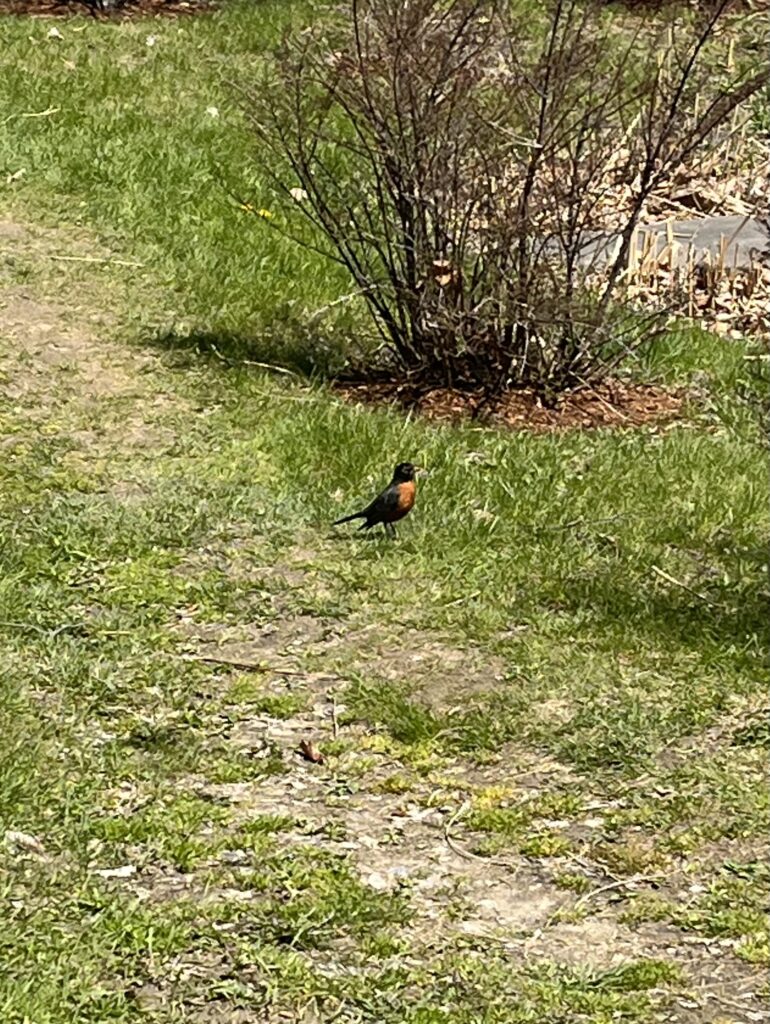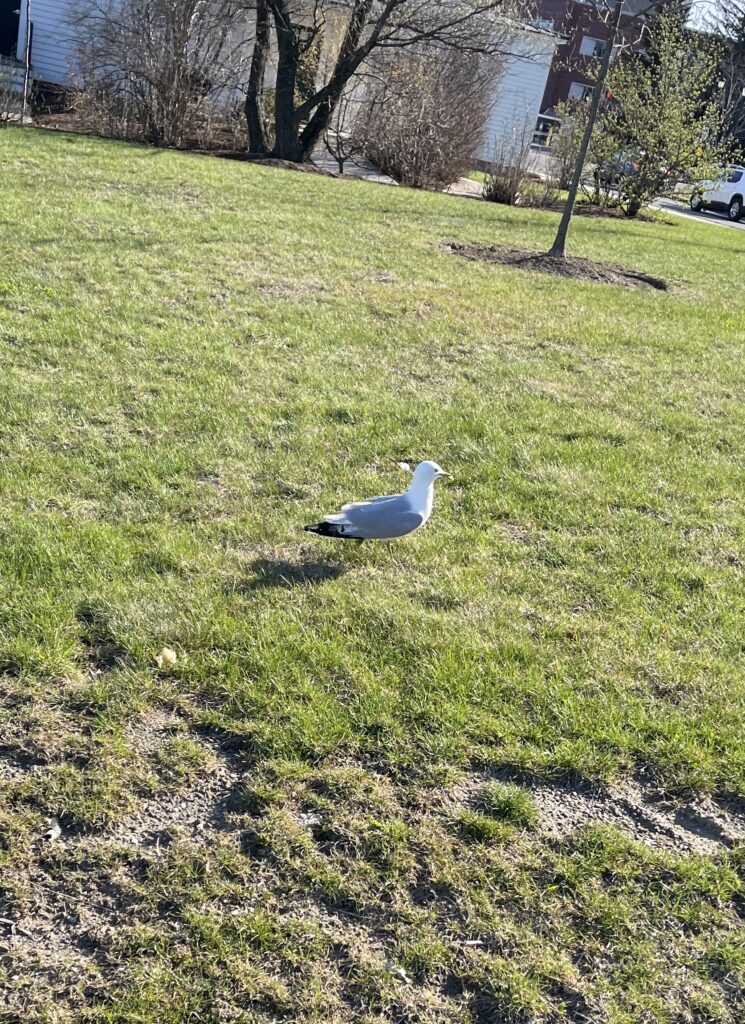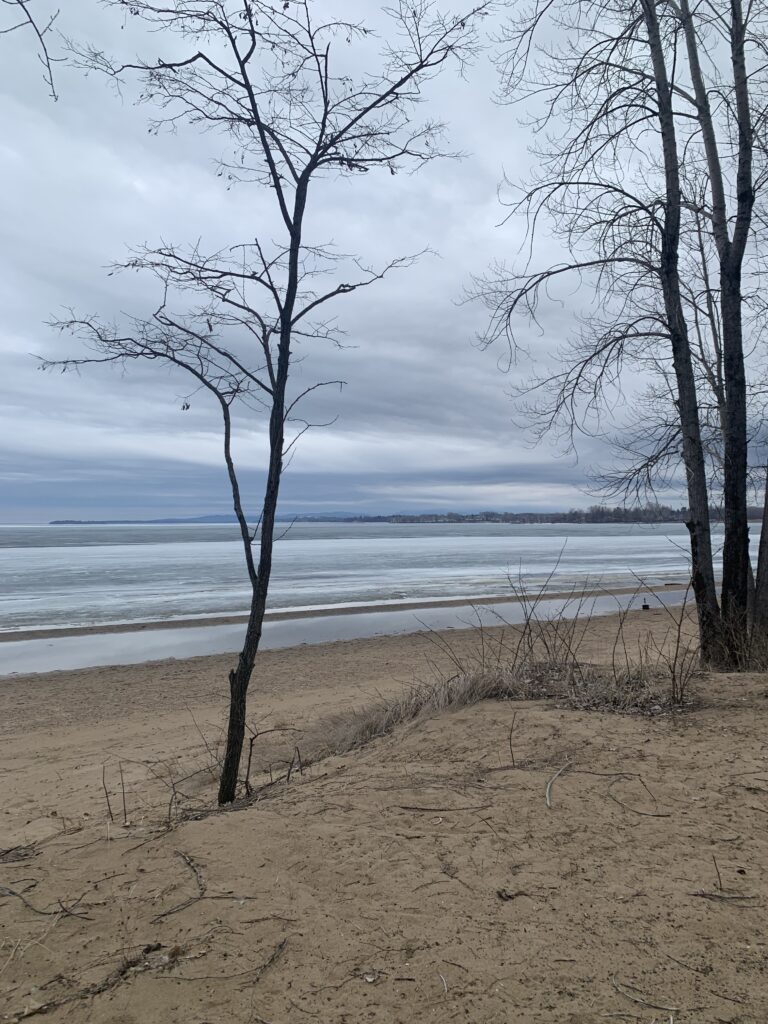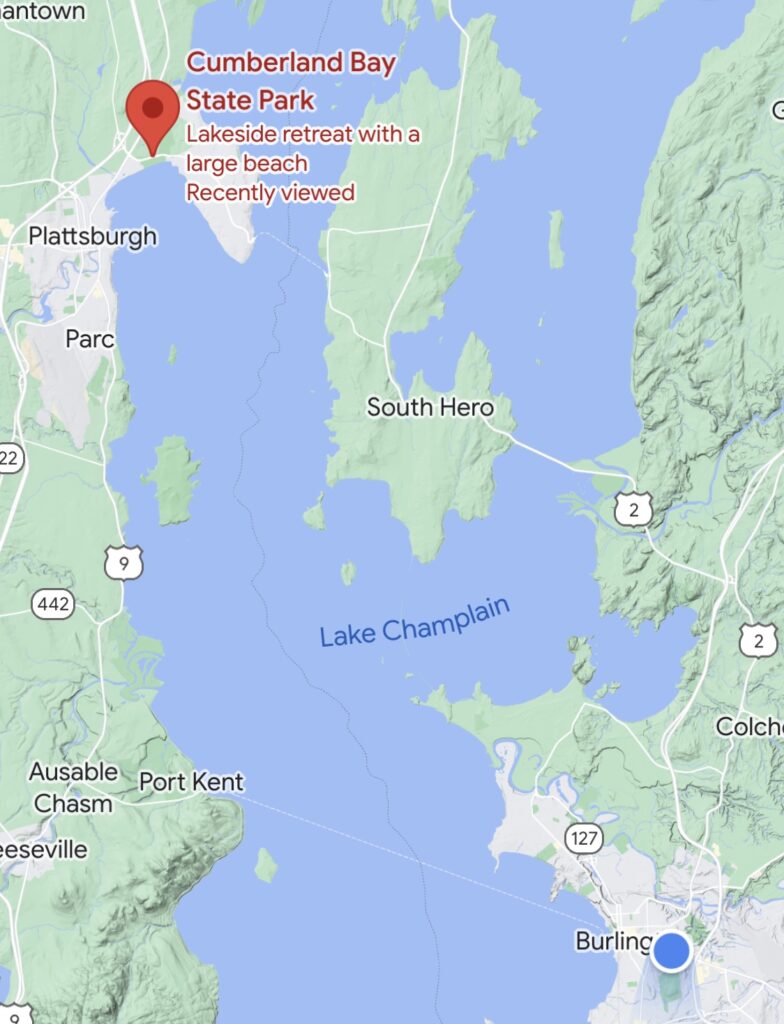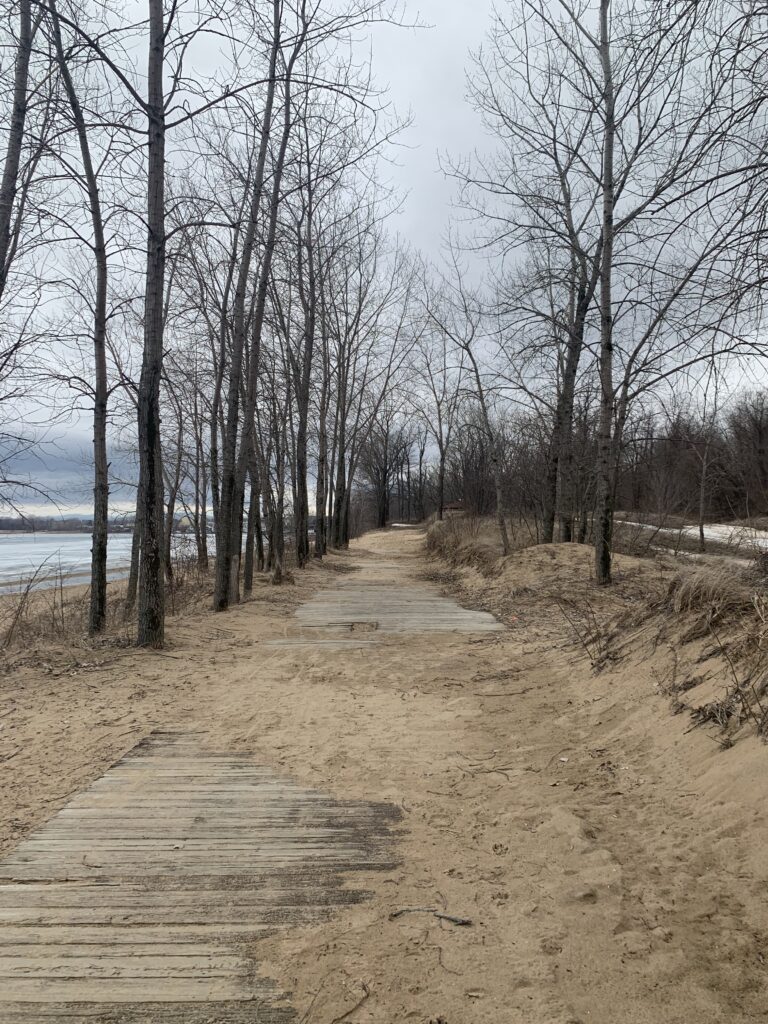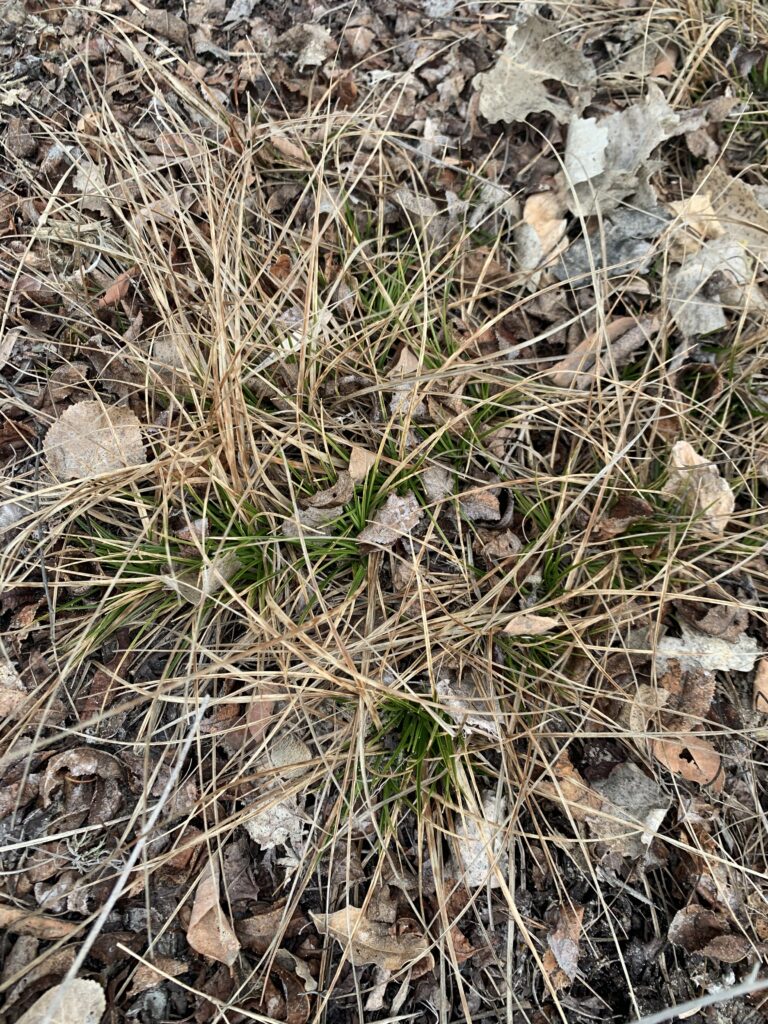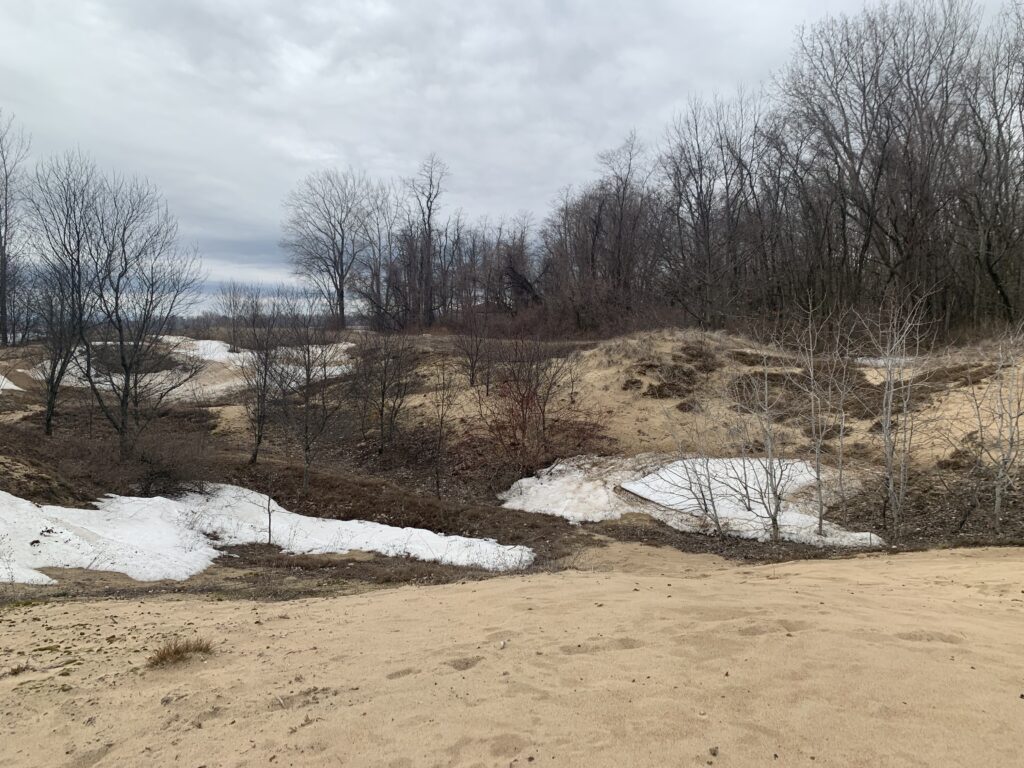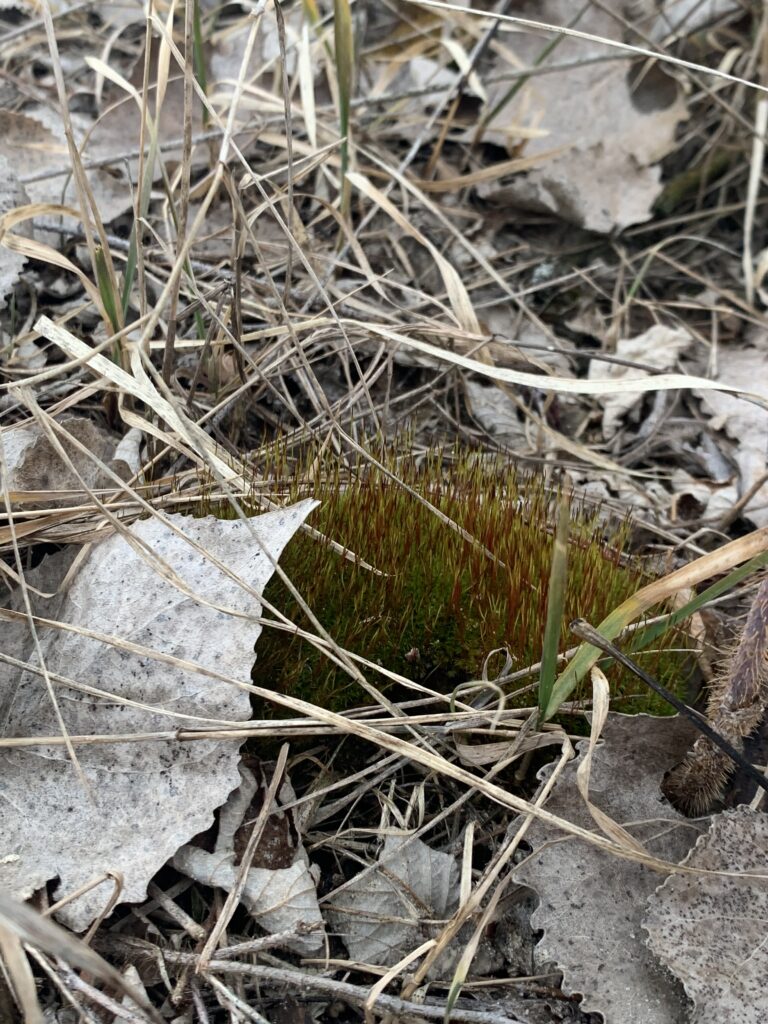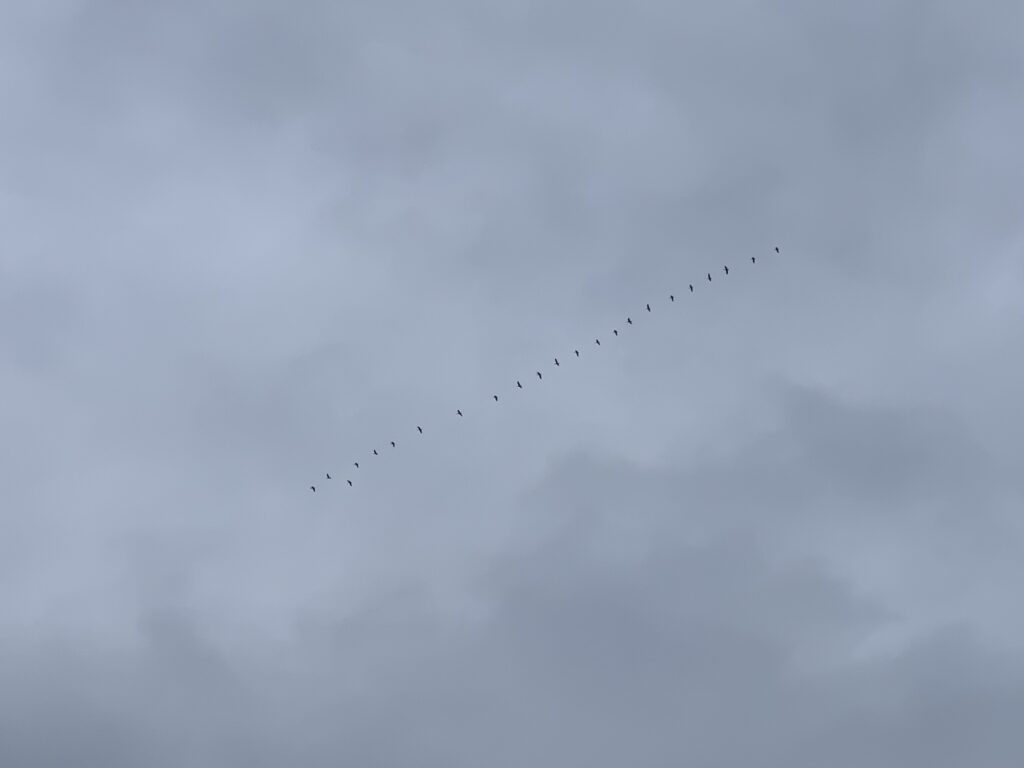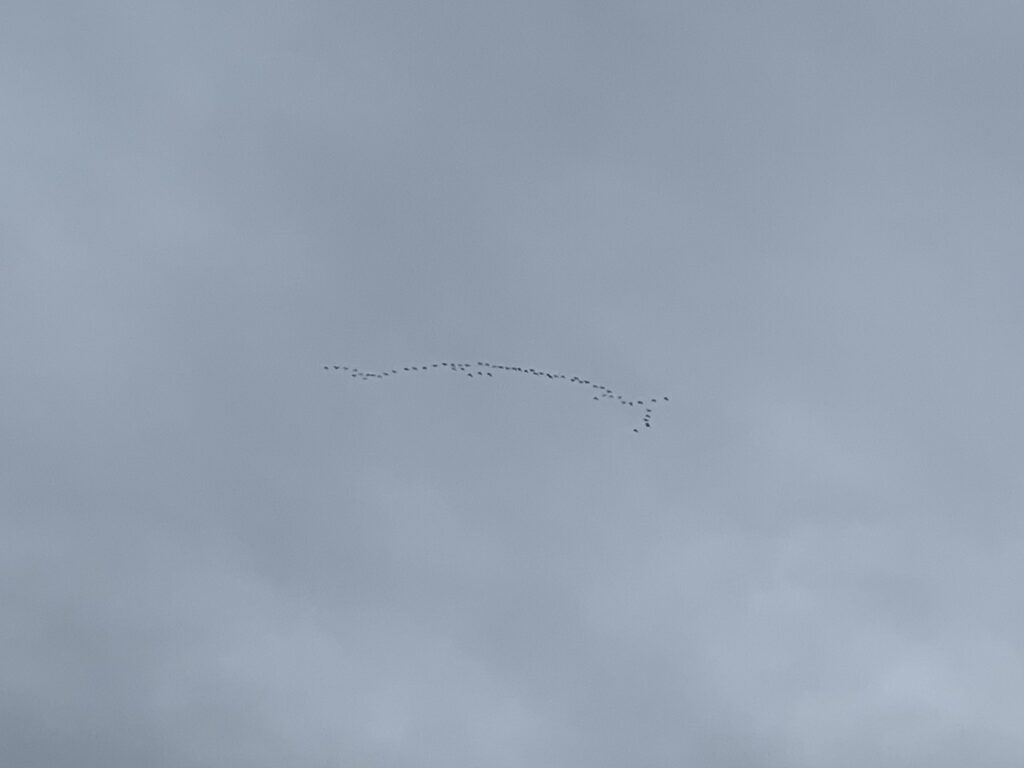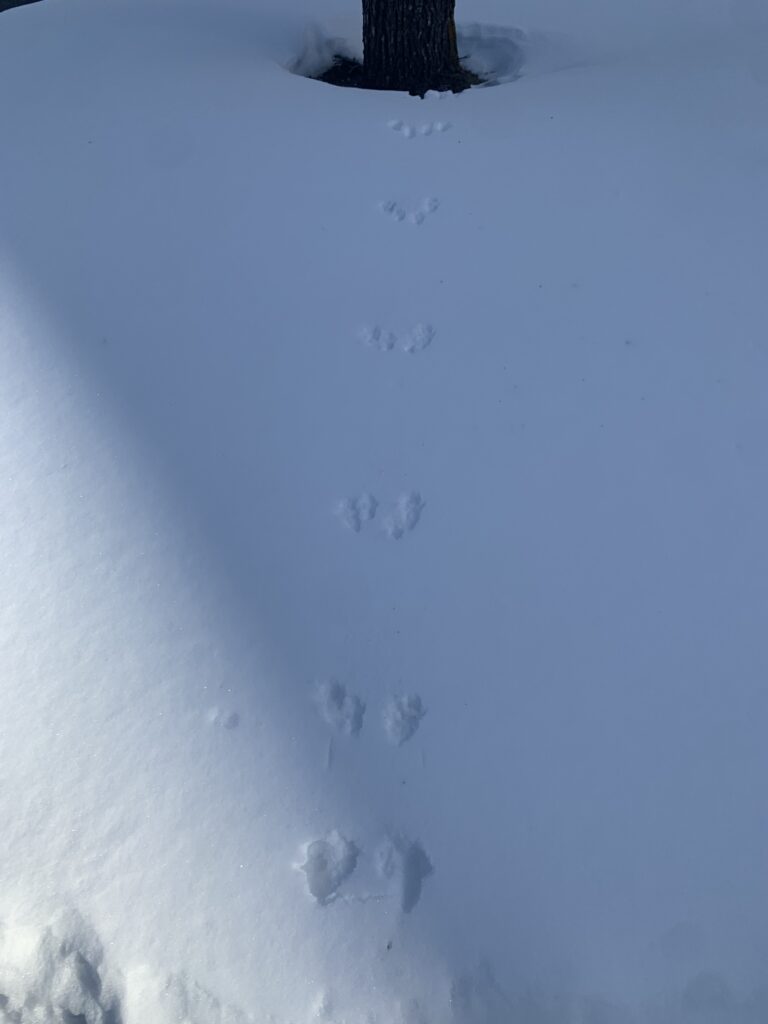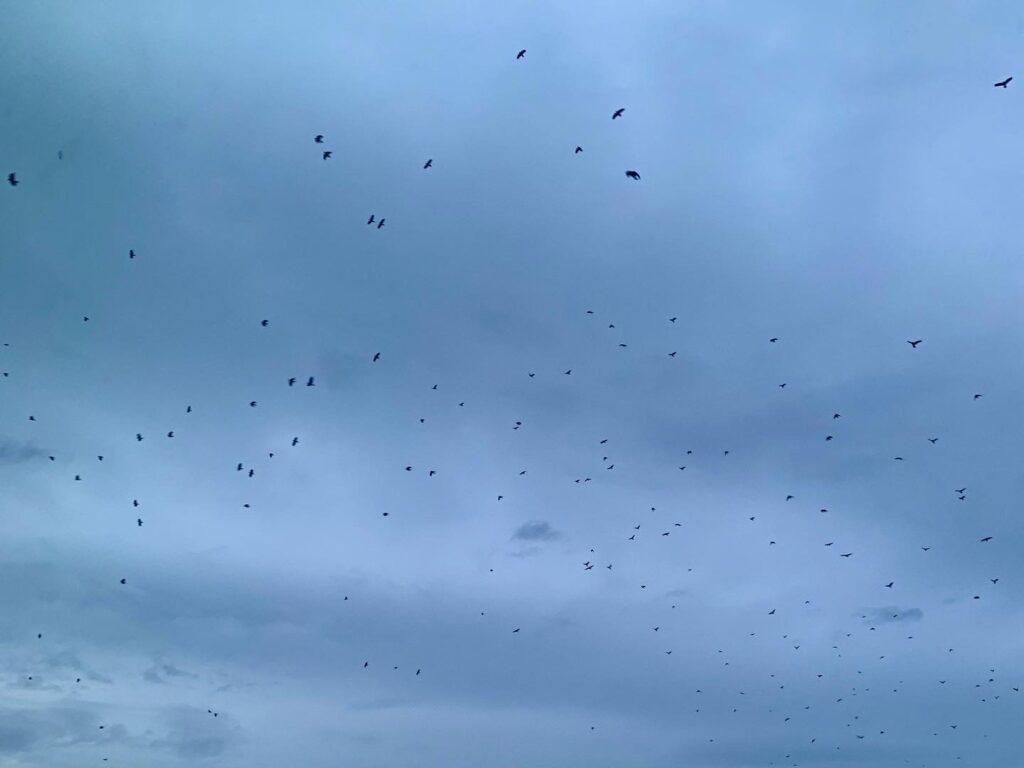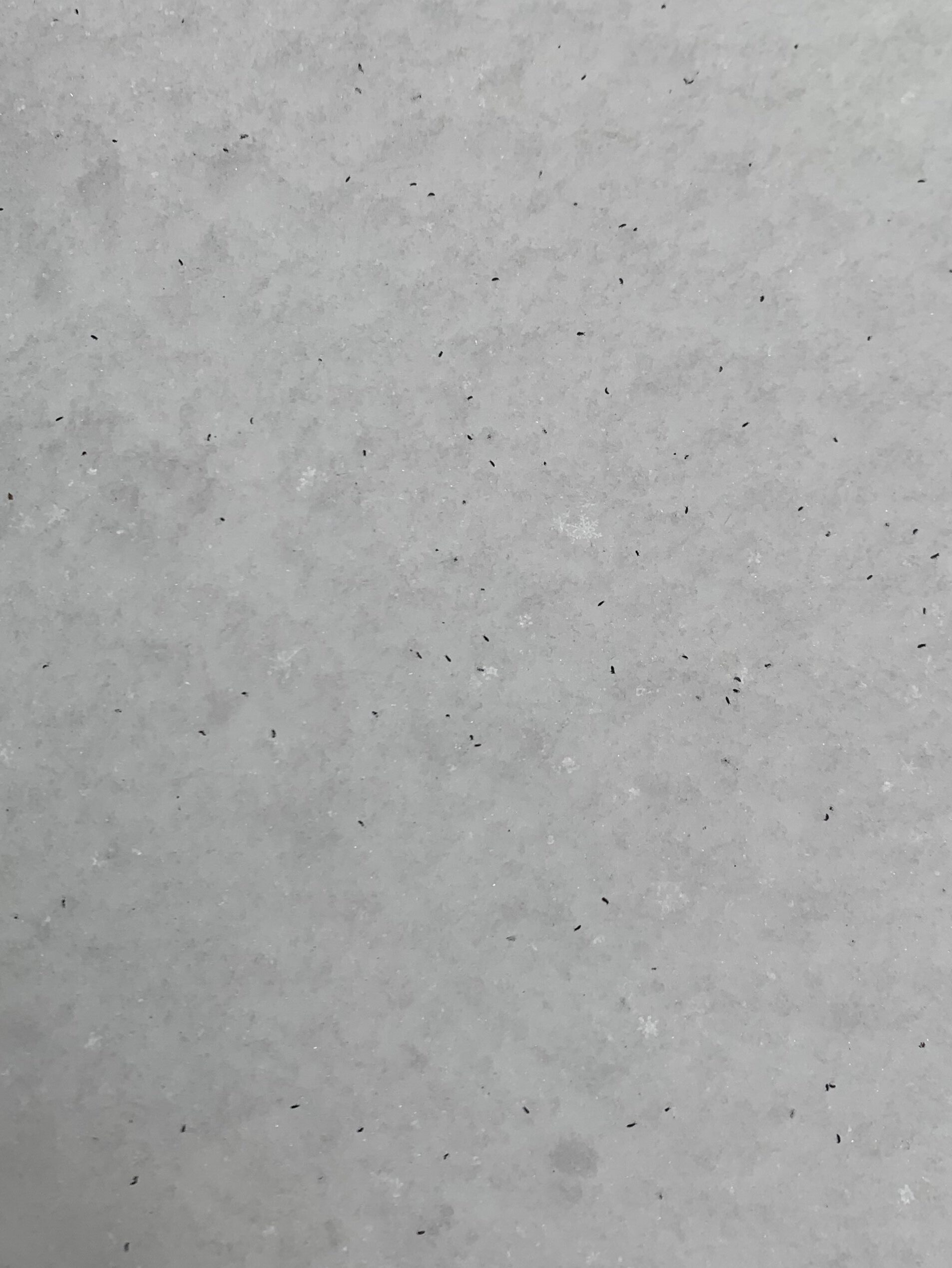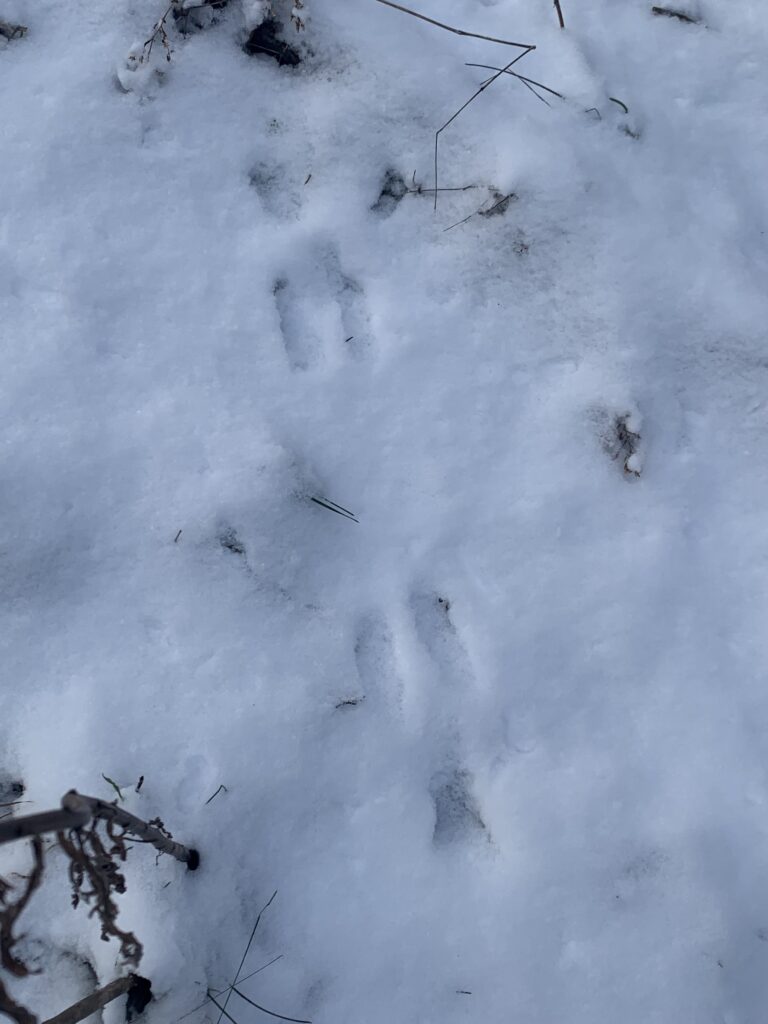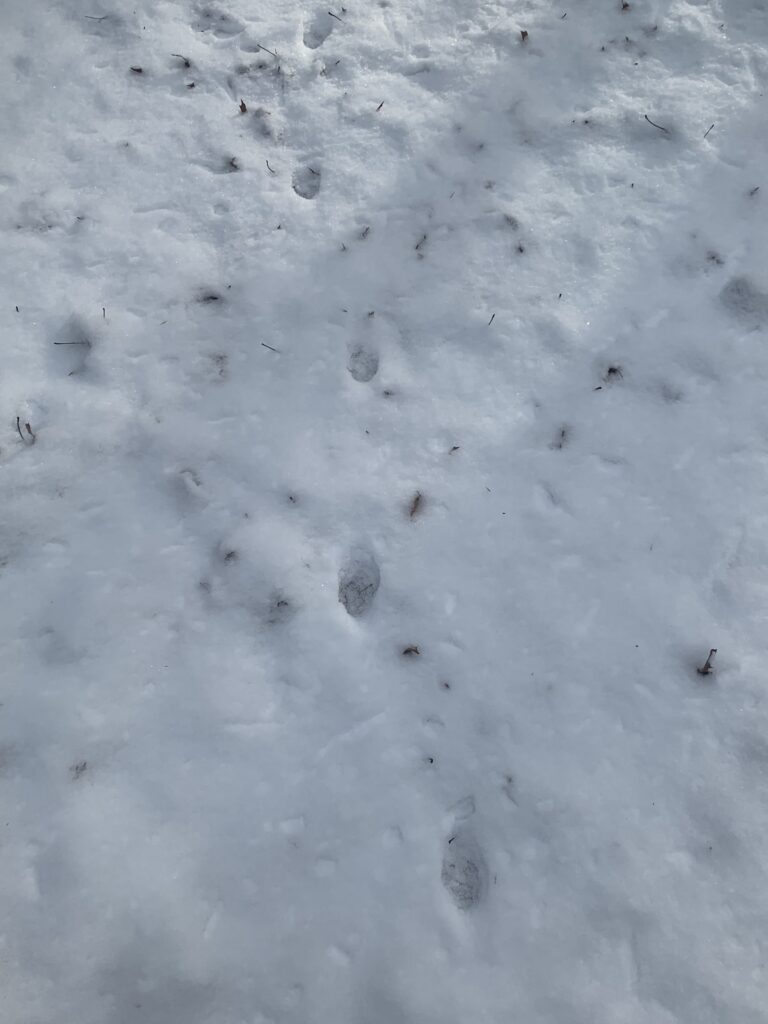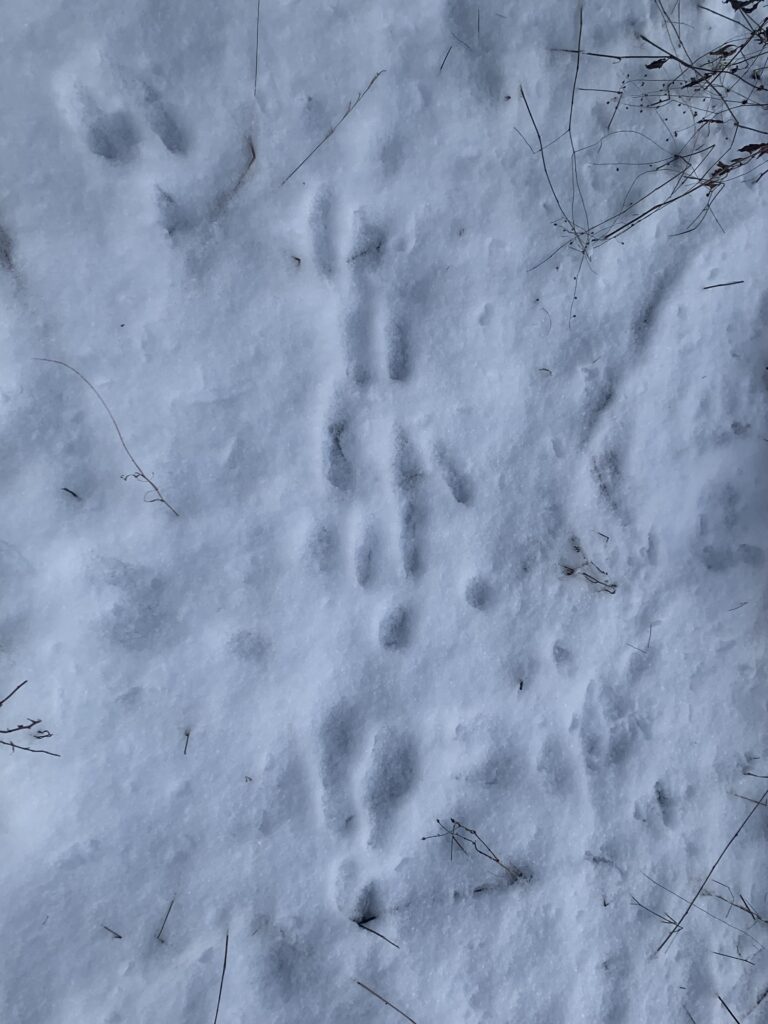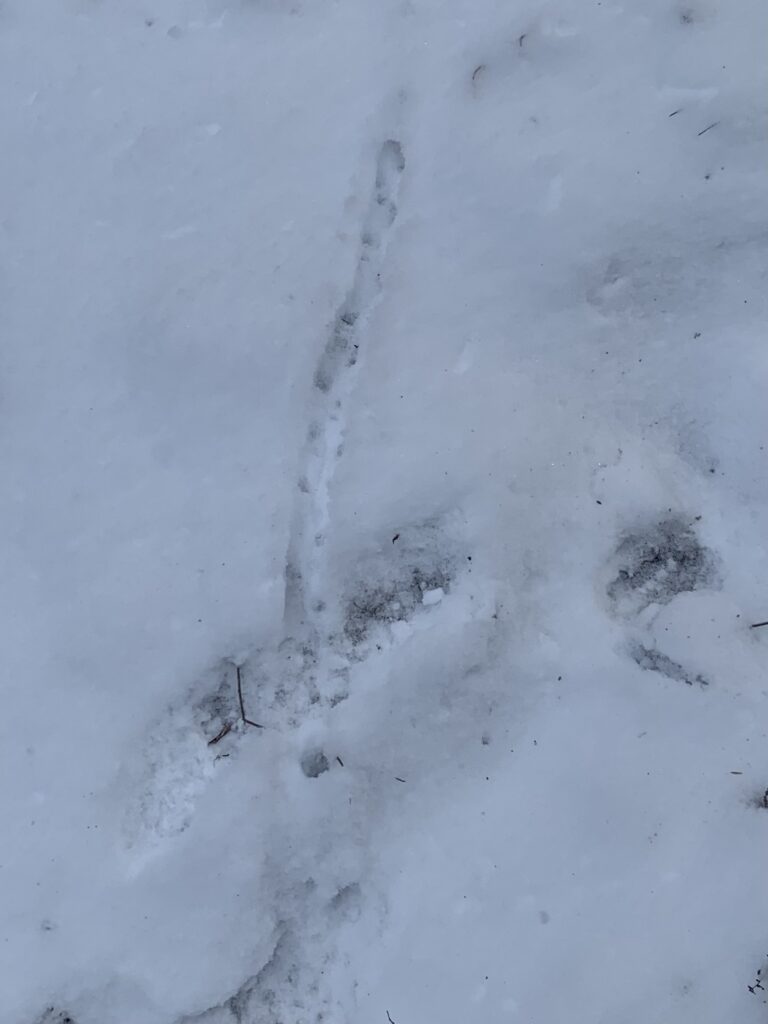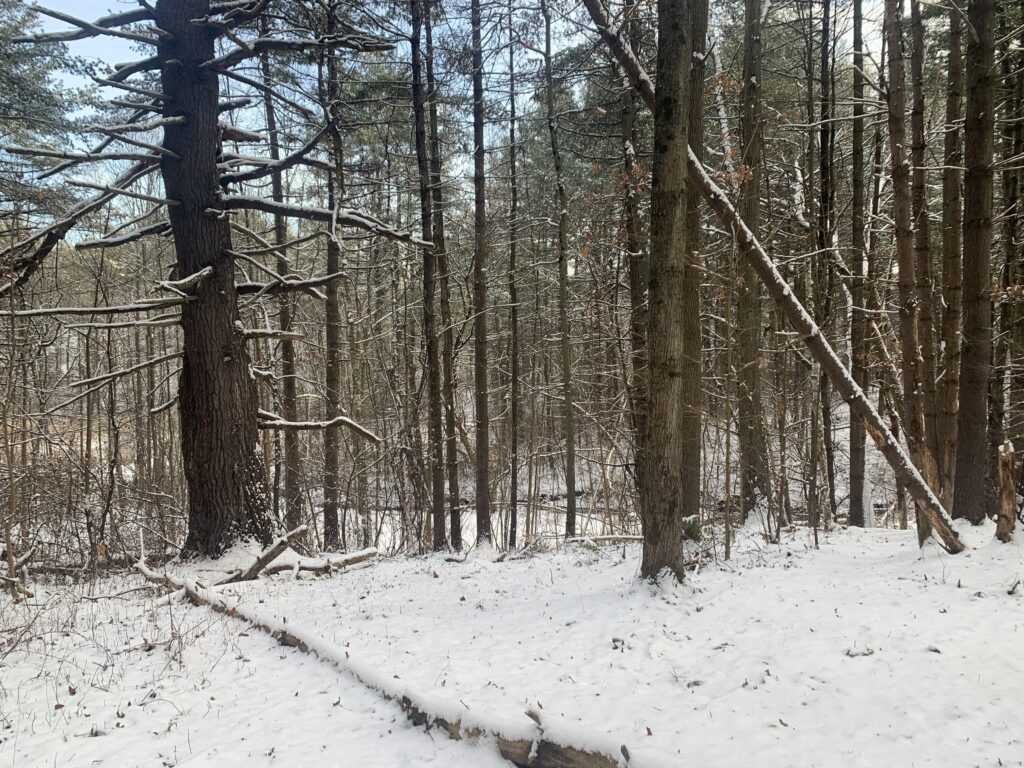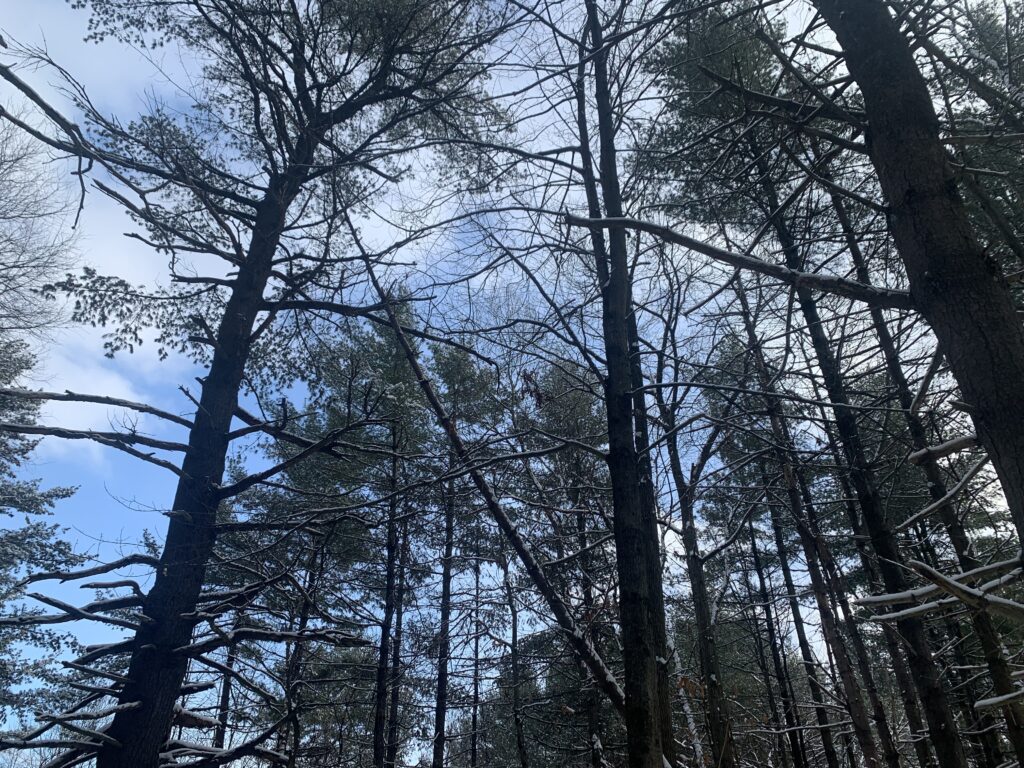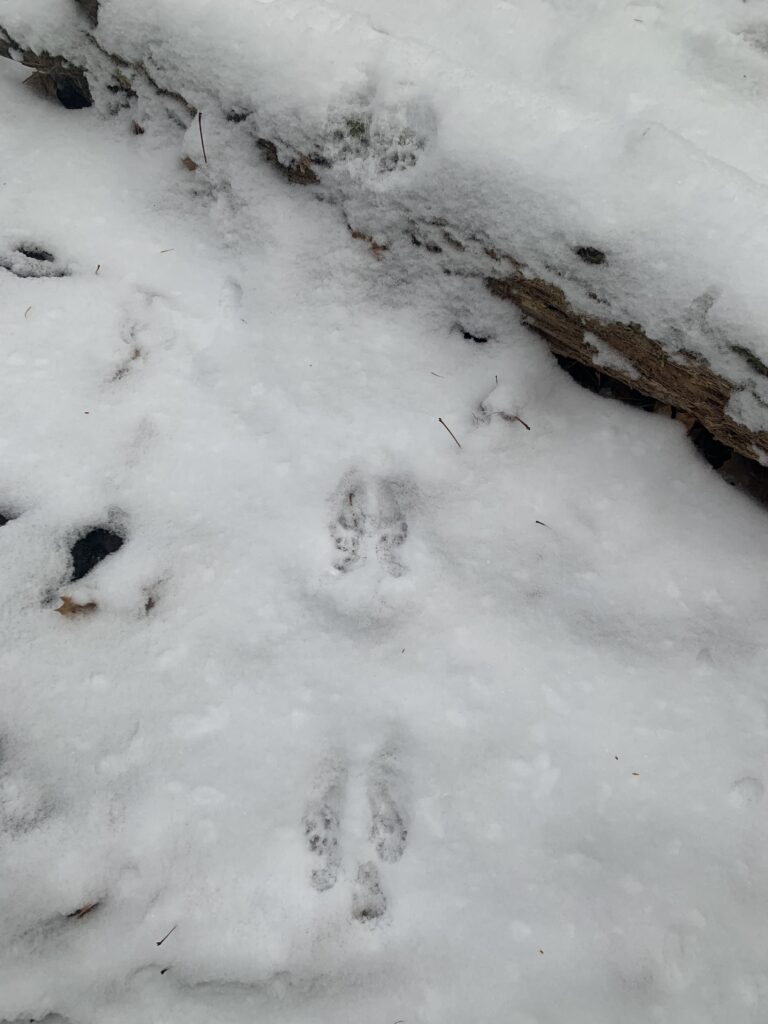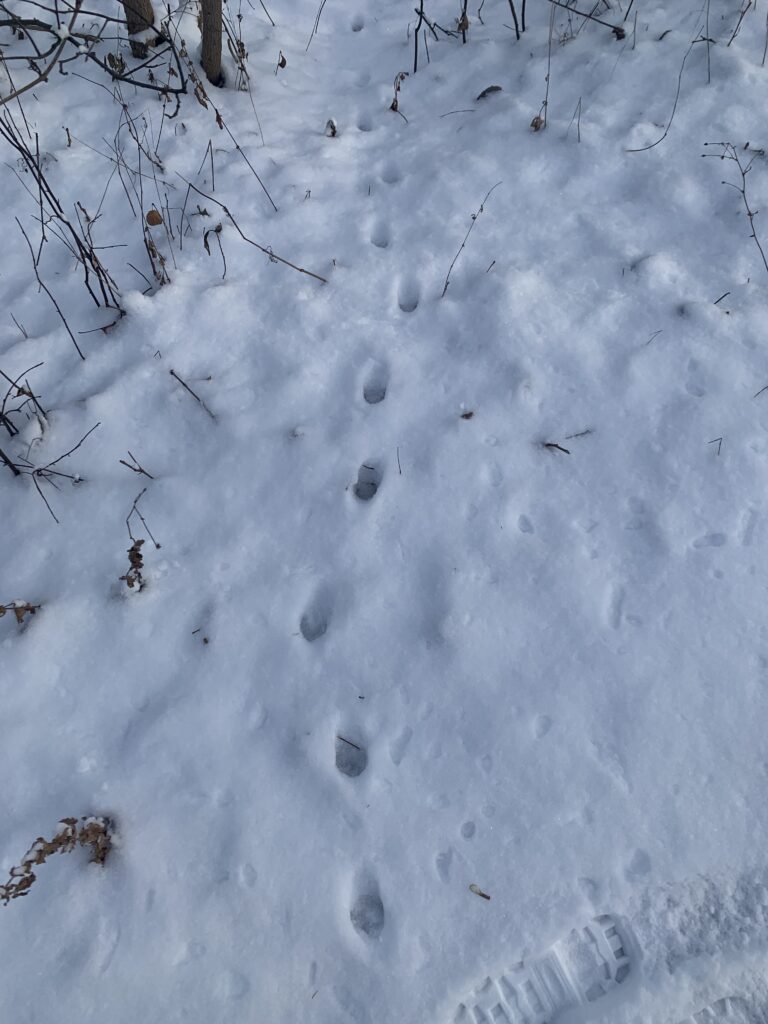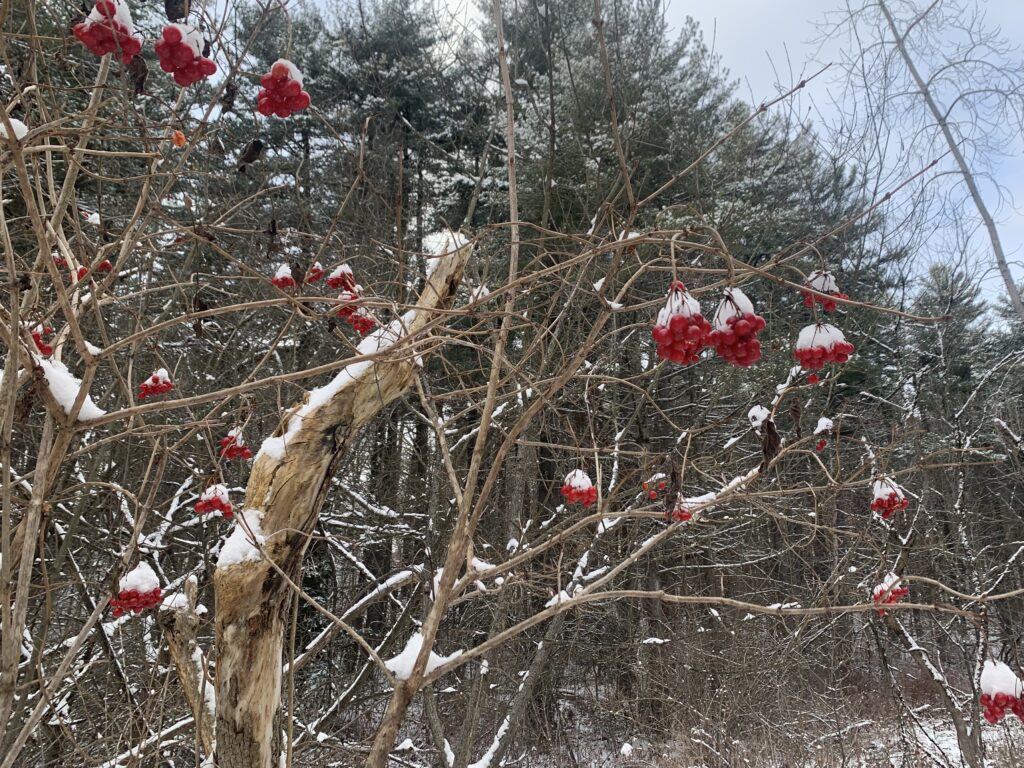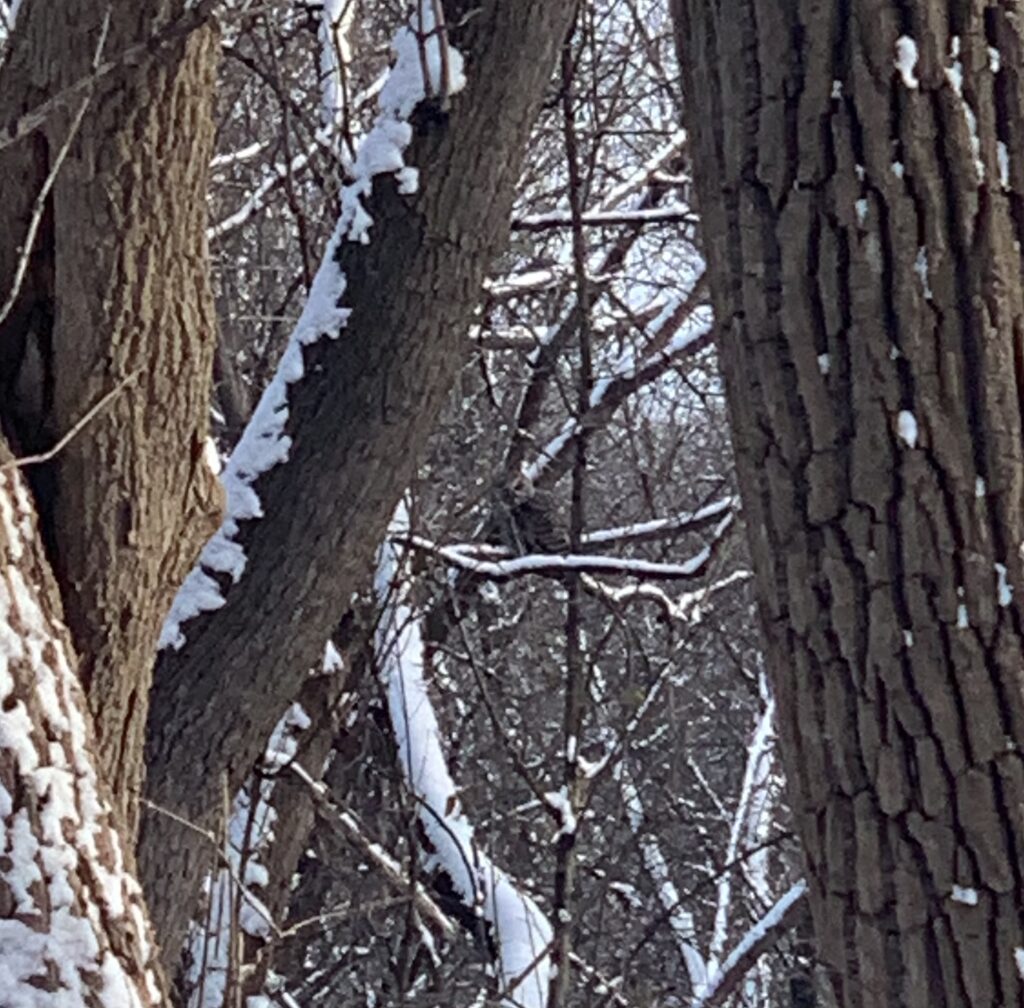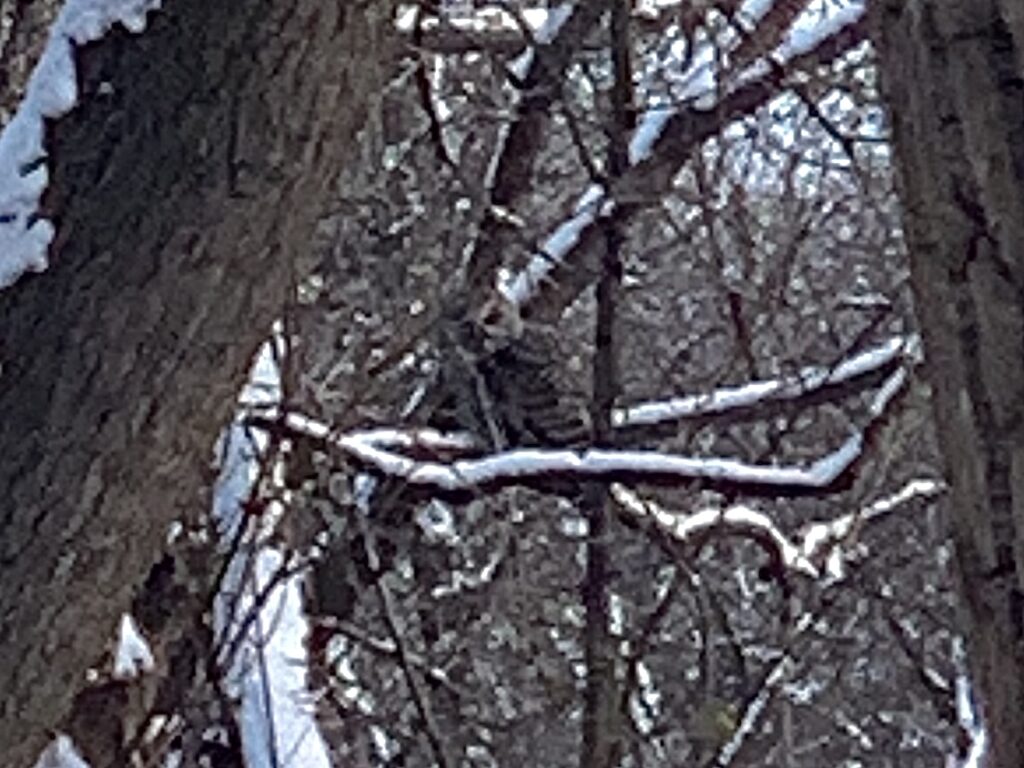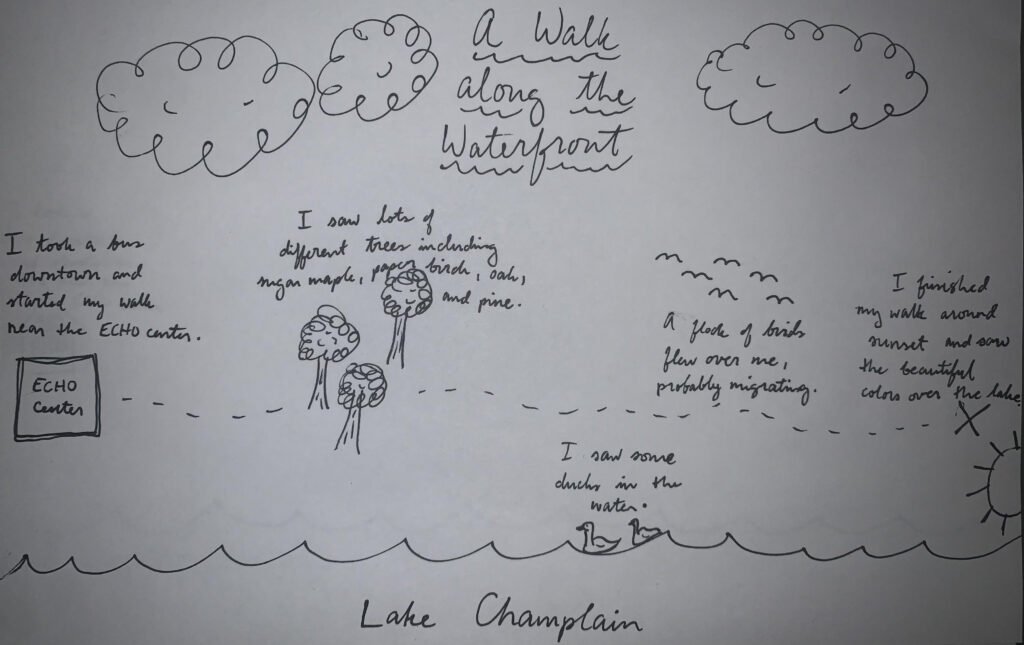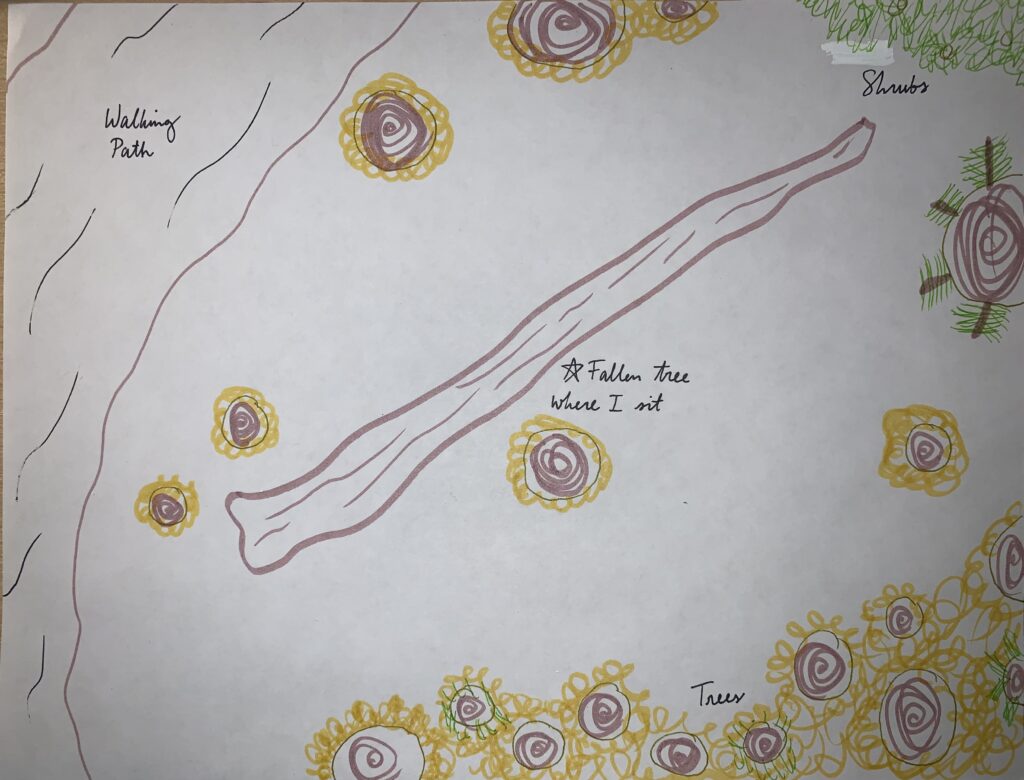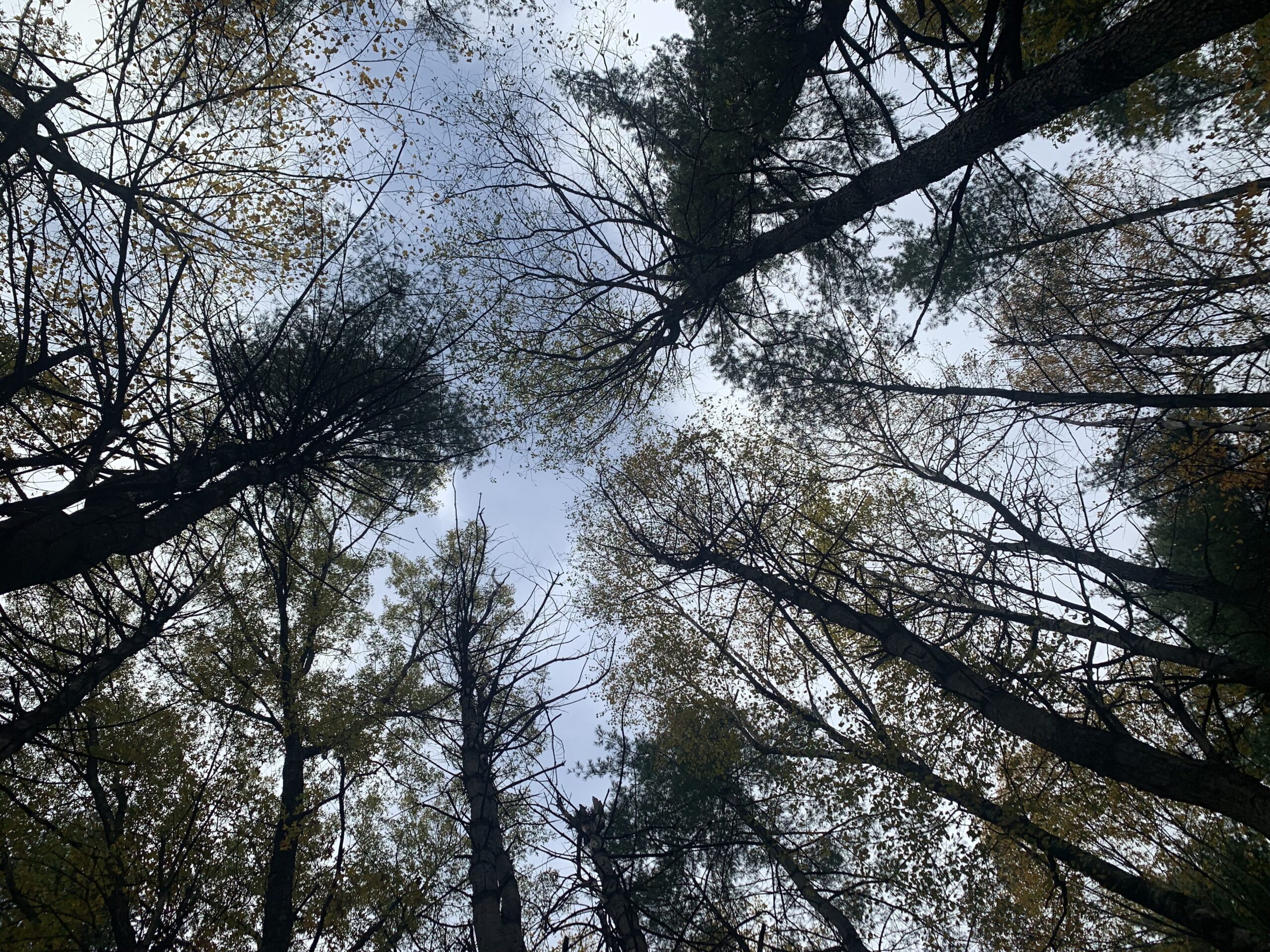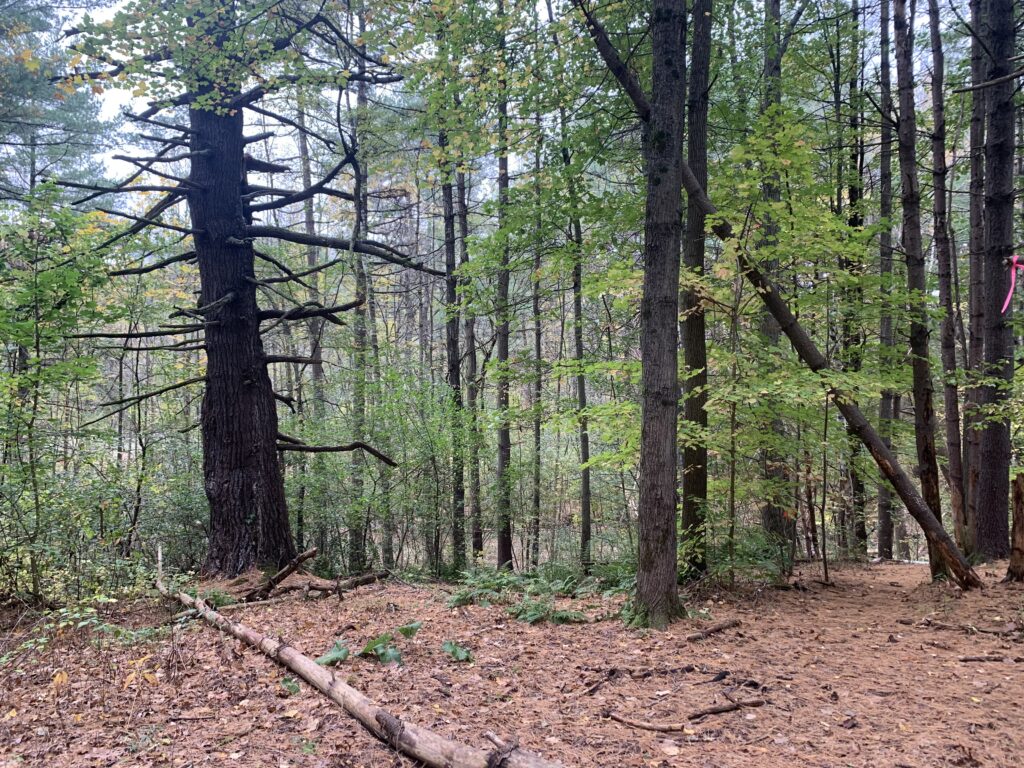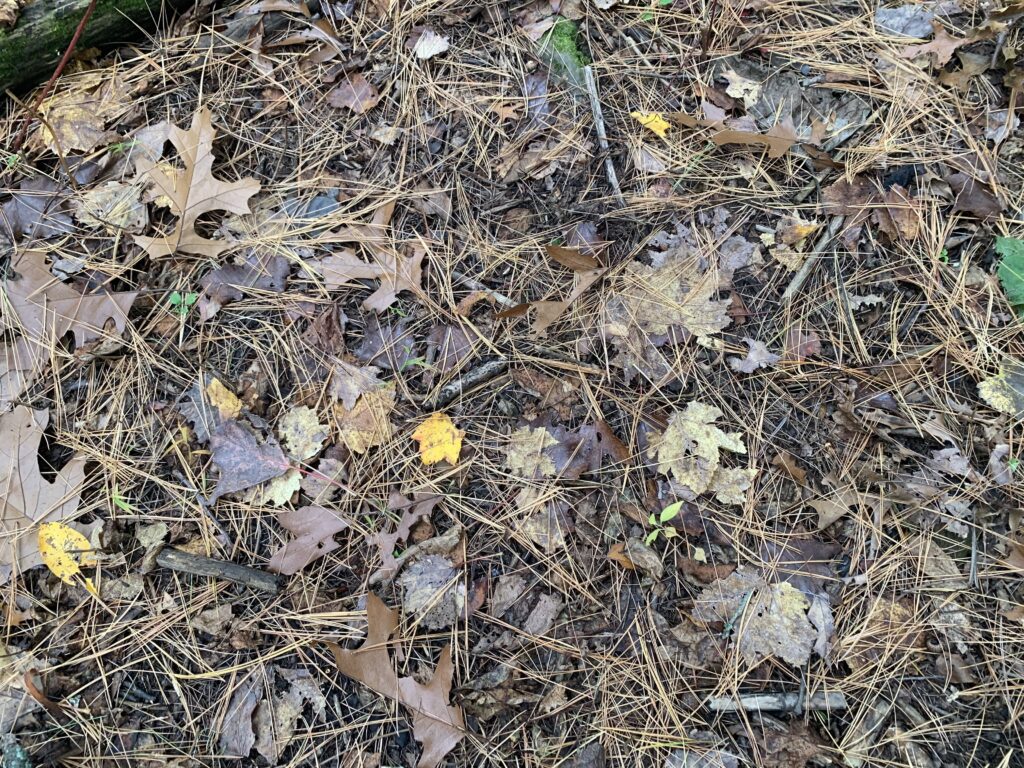When I visited my spot in Centennial Woods this week, I was excited to see shades of green and hear sounds of spring, such as the birds chirping and water running. There were small green plants beginning to emerge from the ground through the fallen leaves of last autumn. The trees and other woody plants were budding, with some already growing new leaves.
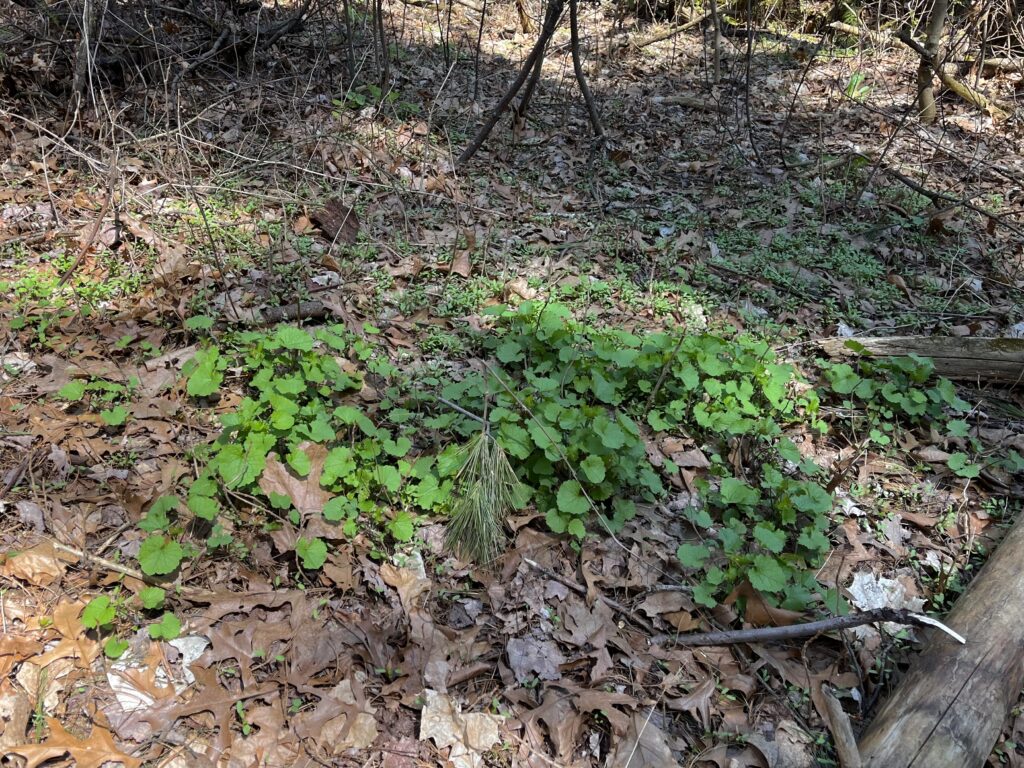
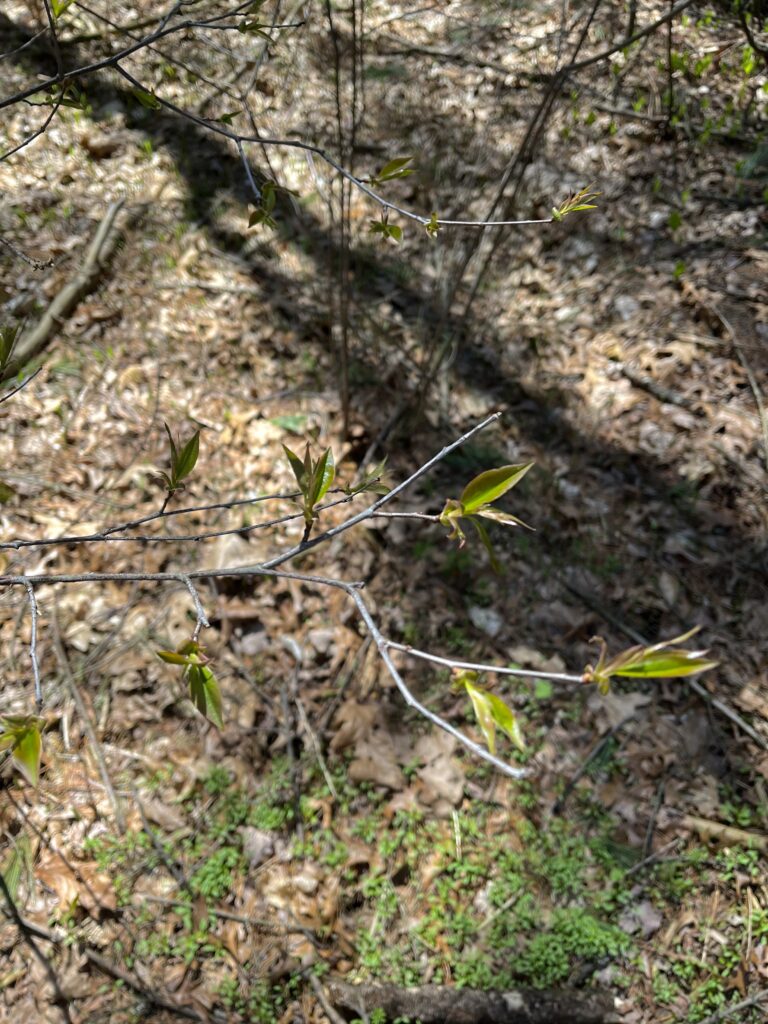
In addition to the new greenery, I saw and heard many birds while I sat at my spot. I’m lucky to have two bird feeders at my spot, giving me a great view of several small birds. Pictured below on the left are a black-capped chickadee and American goldfinch sharing a feeder, but I also saw a tufted titmouse, a pine warbler, and a white-breasted nuthatch. I noticed a hawk fly overhead as well, which I identified to be a red-shouldered hawk with the help of the Merlin Bird ID app’s sound feature. I even saw a red squirrel climbing a tree! Using some of these wildlife sightings, I created a species interaction diagram pictured below on the right.
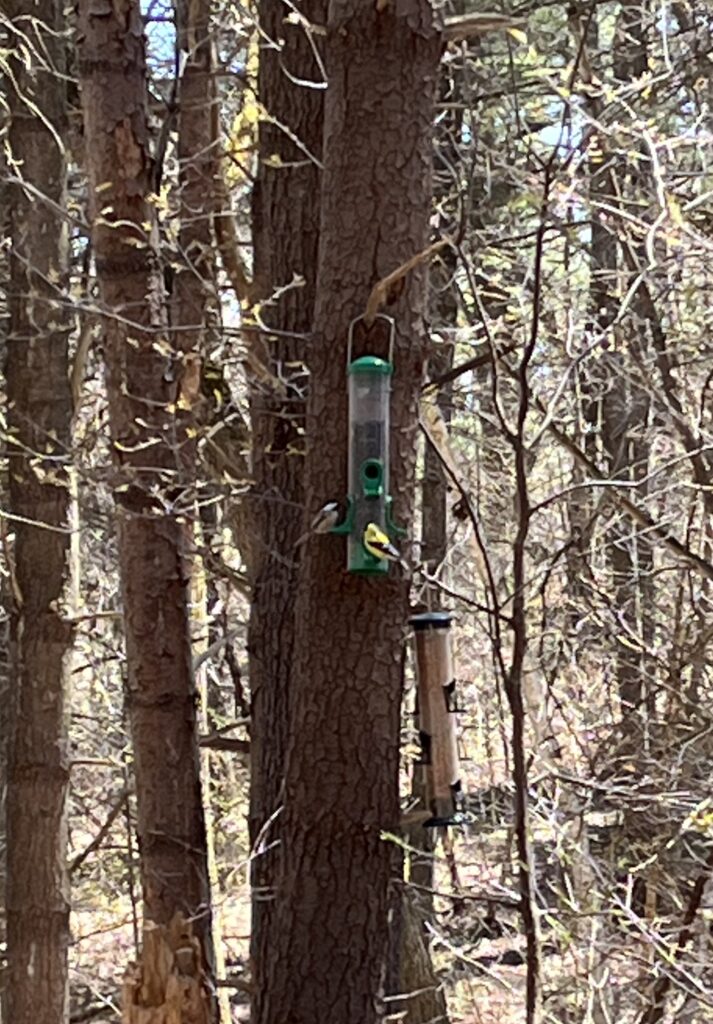
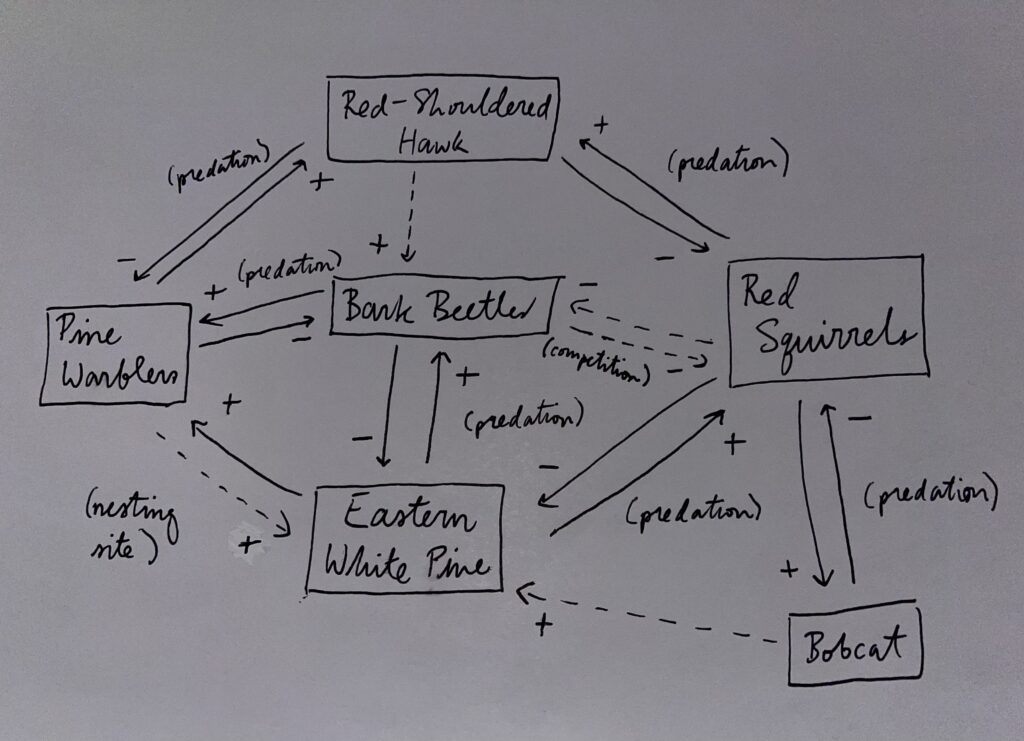
Over the course of the past year, I definitely developed a connection to my spot and developed a better understanding for local nature. I saw how nature and culture intertwined firsthand in many ways. I noticed that people and wildlife both come out more when the weather is nice. I also saw a connection between the natural and human world when I would try to decipher if paw prints belonged to coyotes or domestic dogs. I had never studied the phenology of one spot through the seasons before, so I felt this was a valuable experience. I do feel like a part of this spot in some ways, because I feel like I’ve grown and changed with it over this year as well. I will definitely be visiting again in the years to come, so this is not a goodbye, but a see you soon to my spot.

